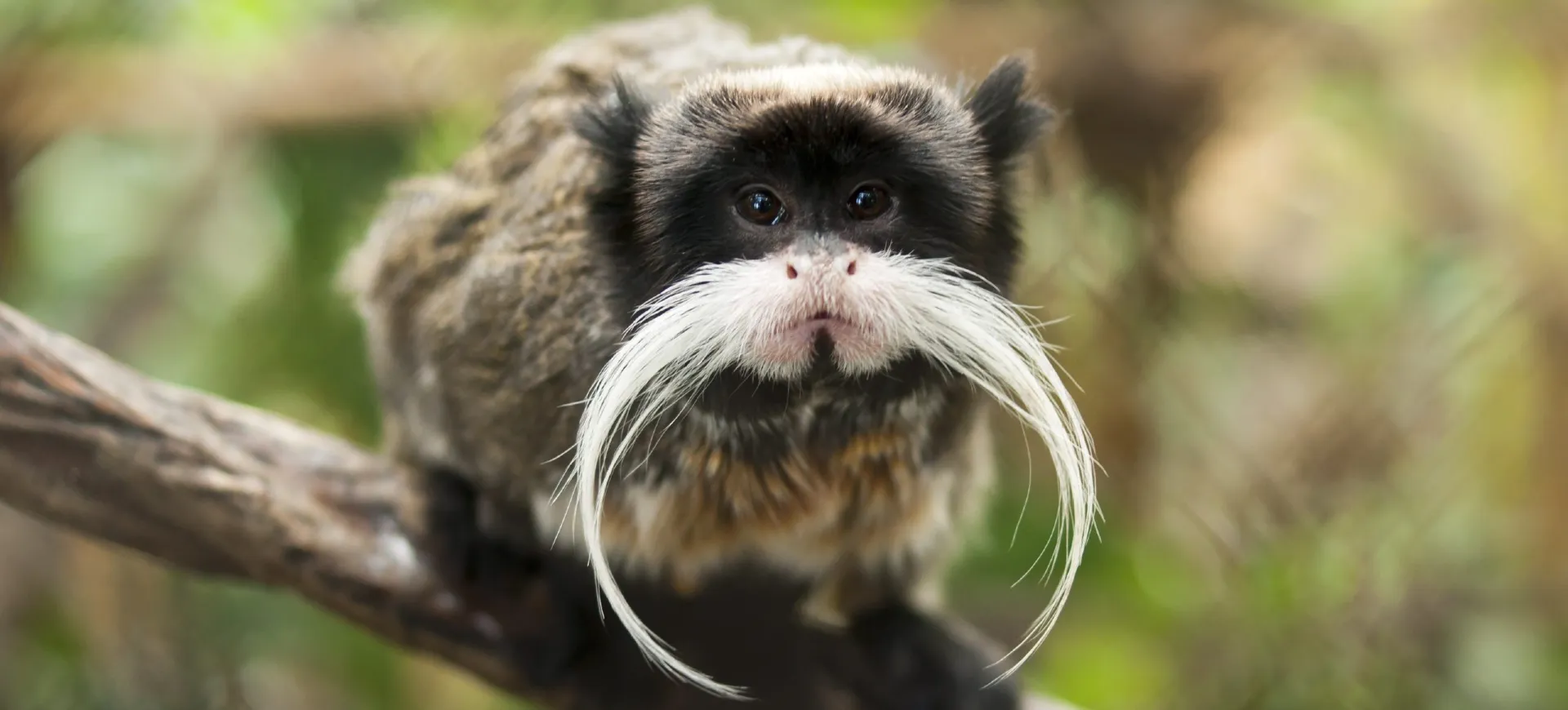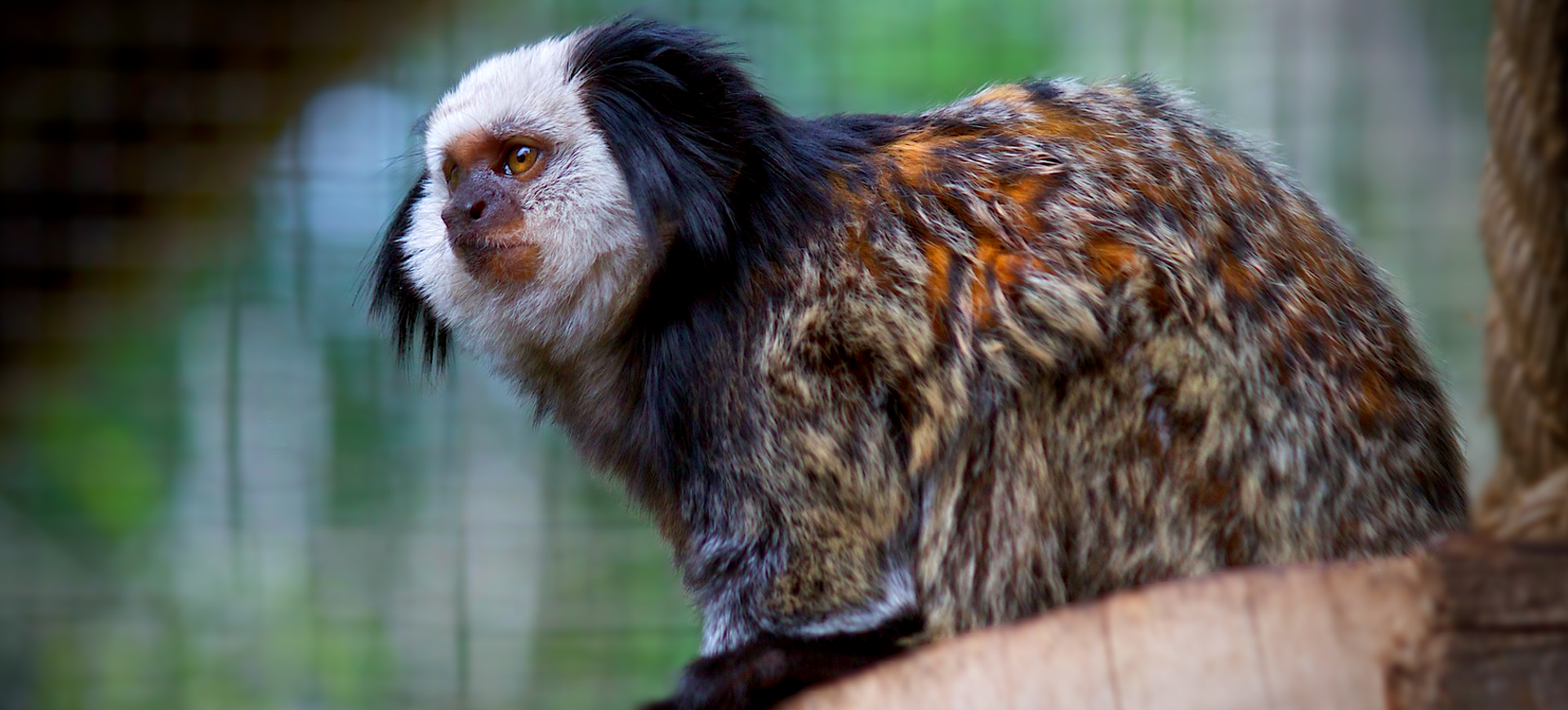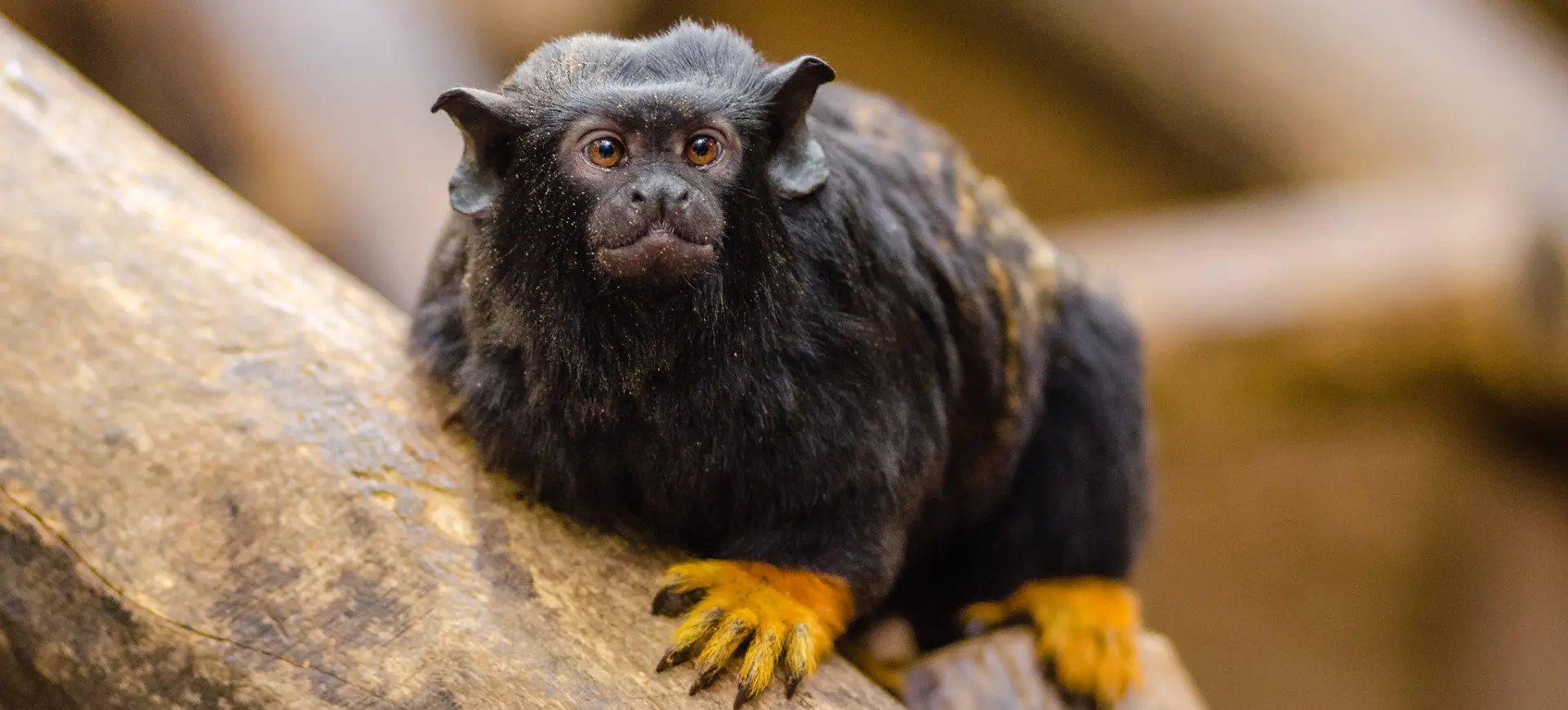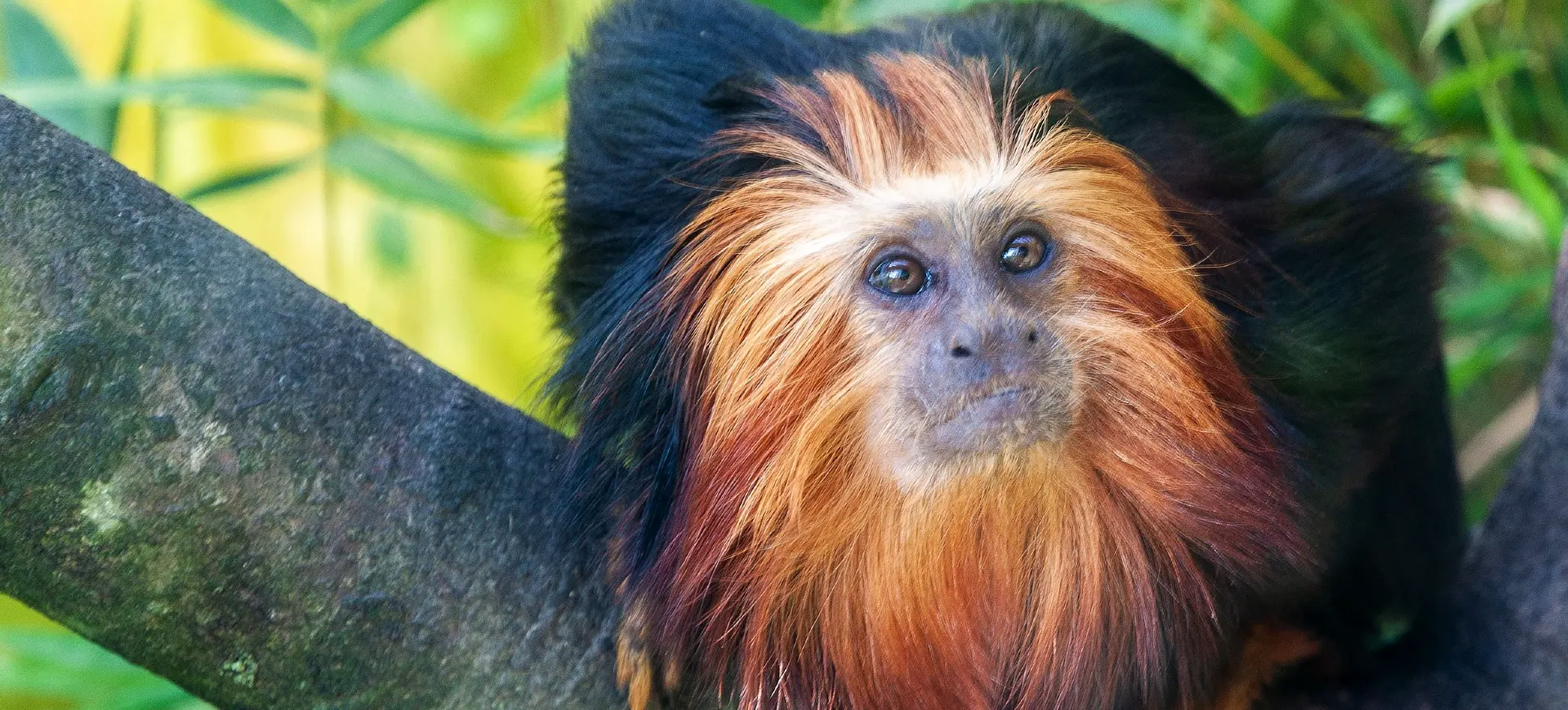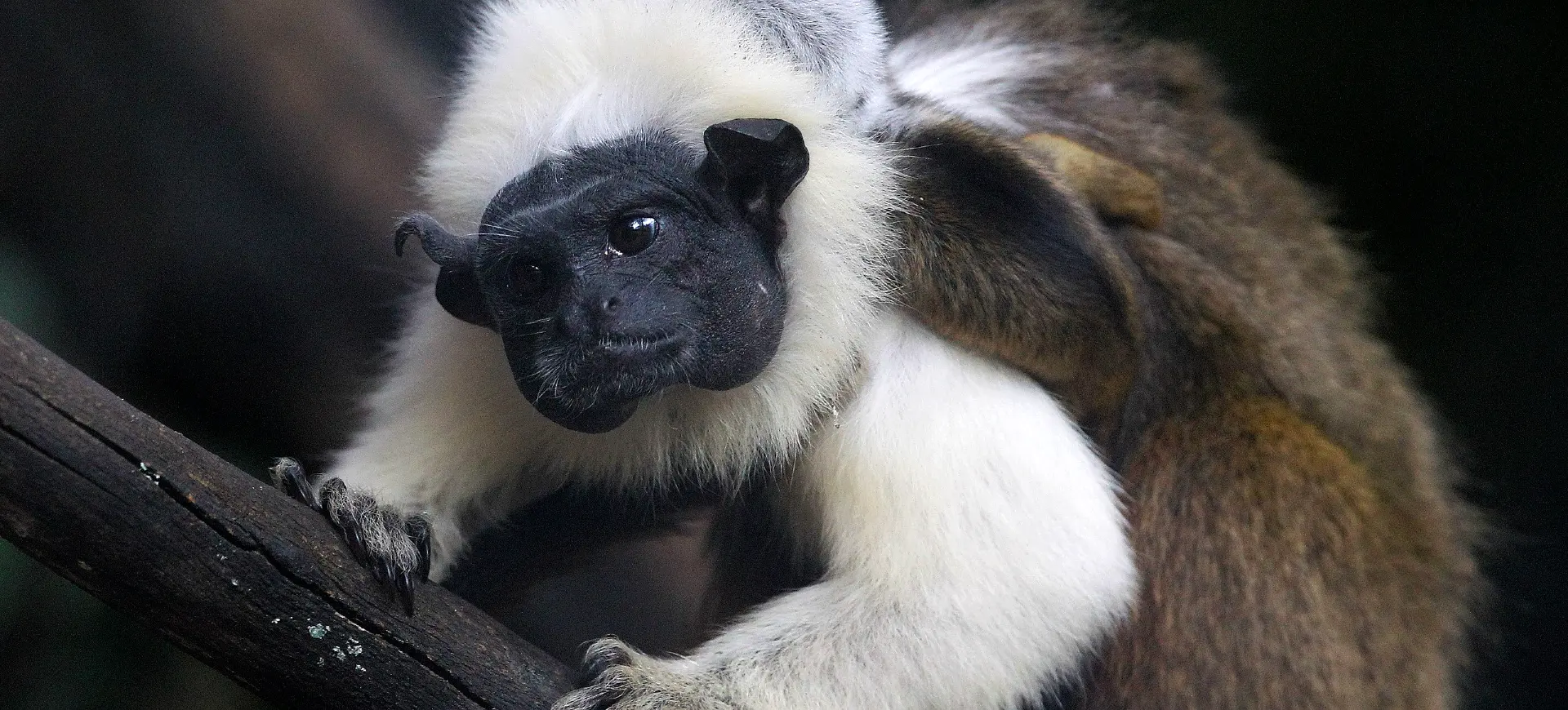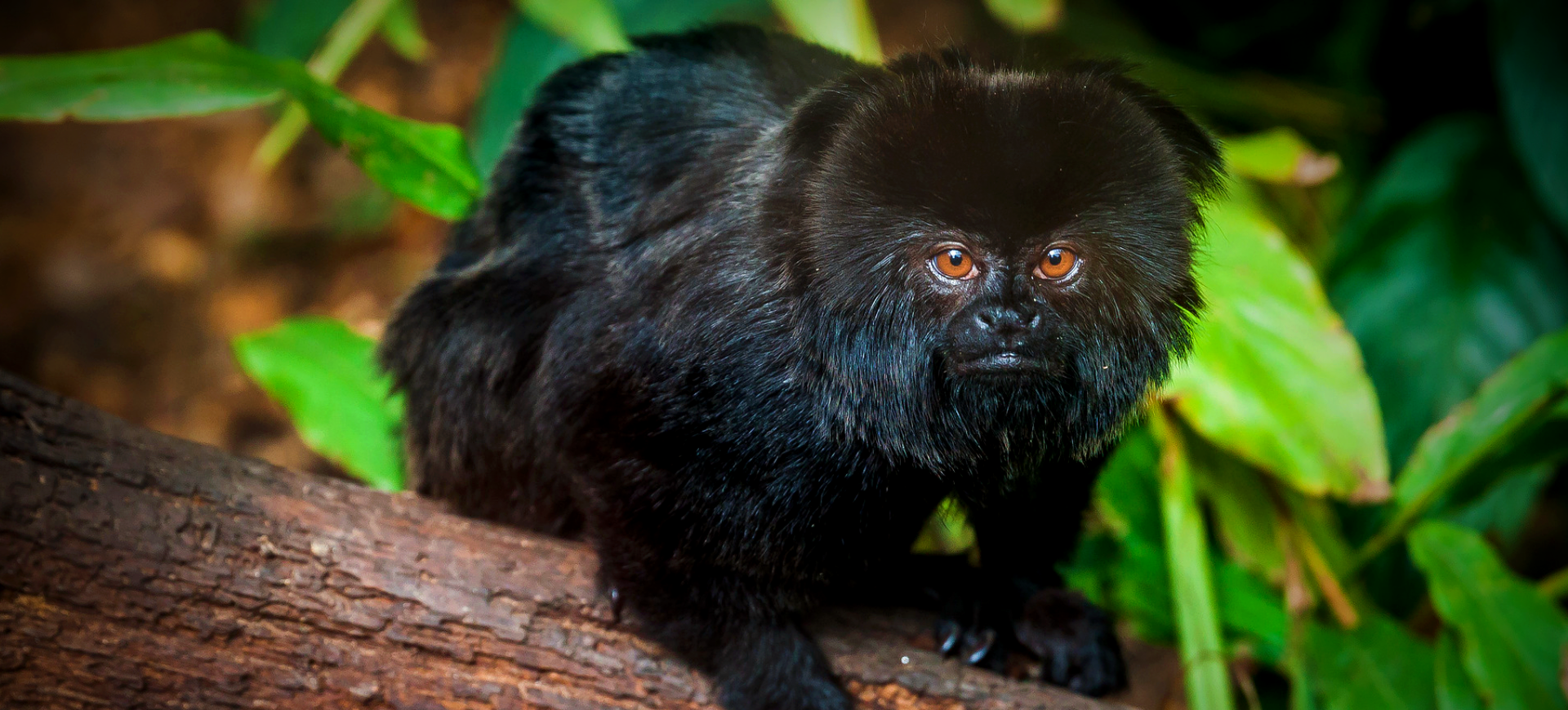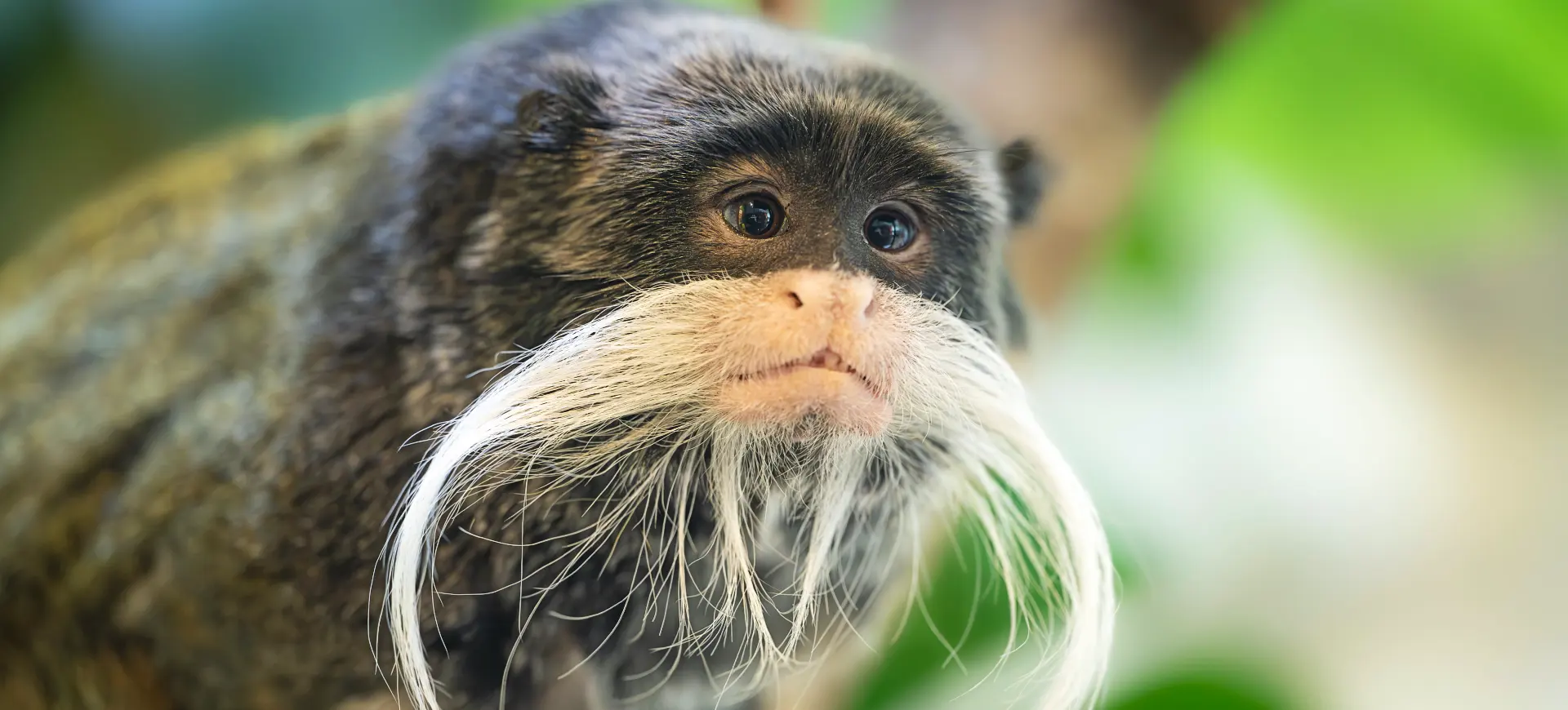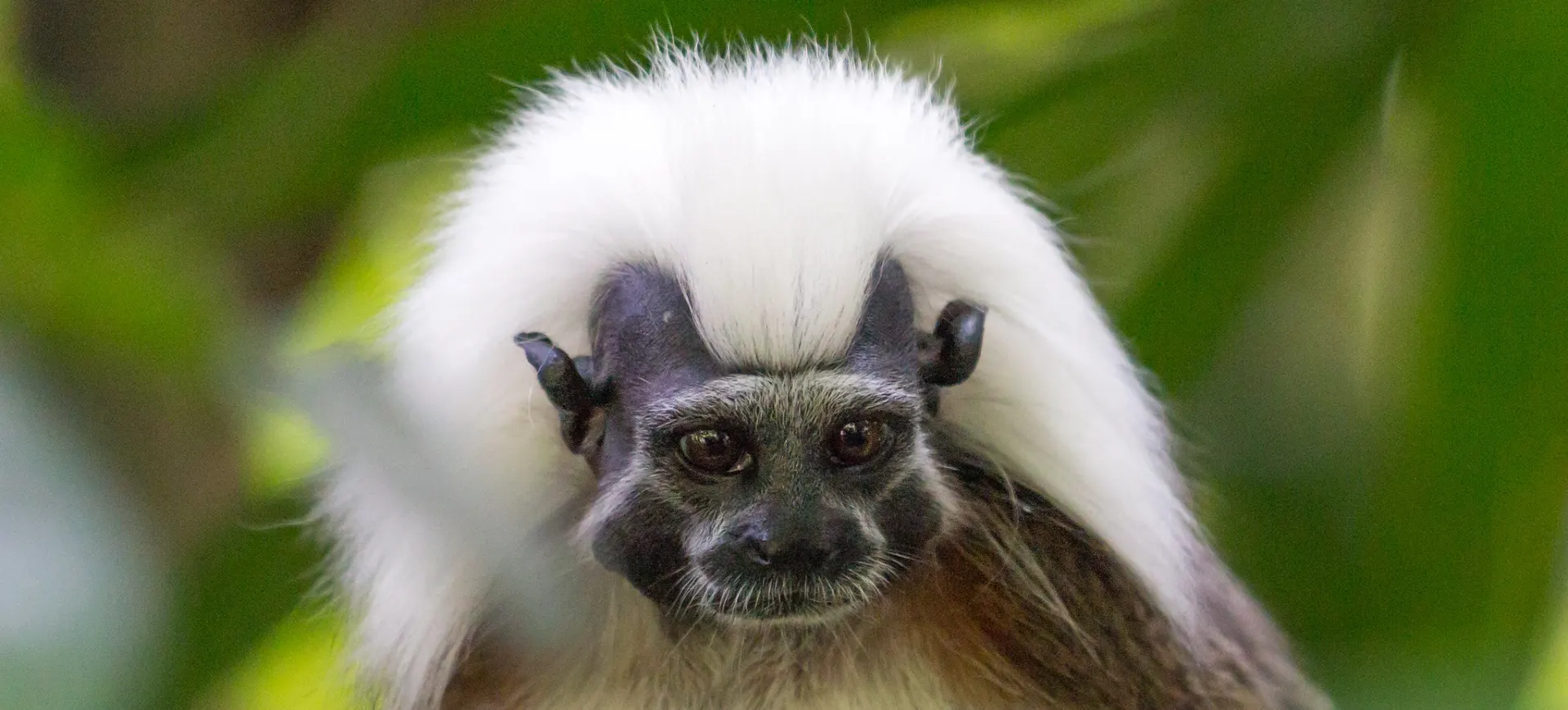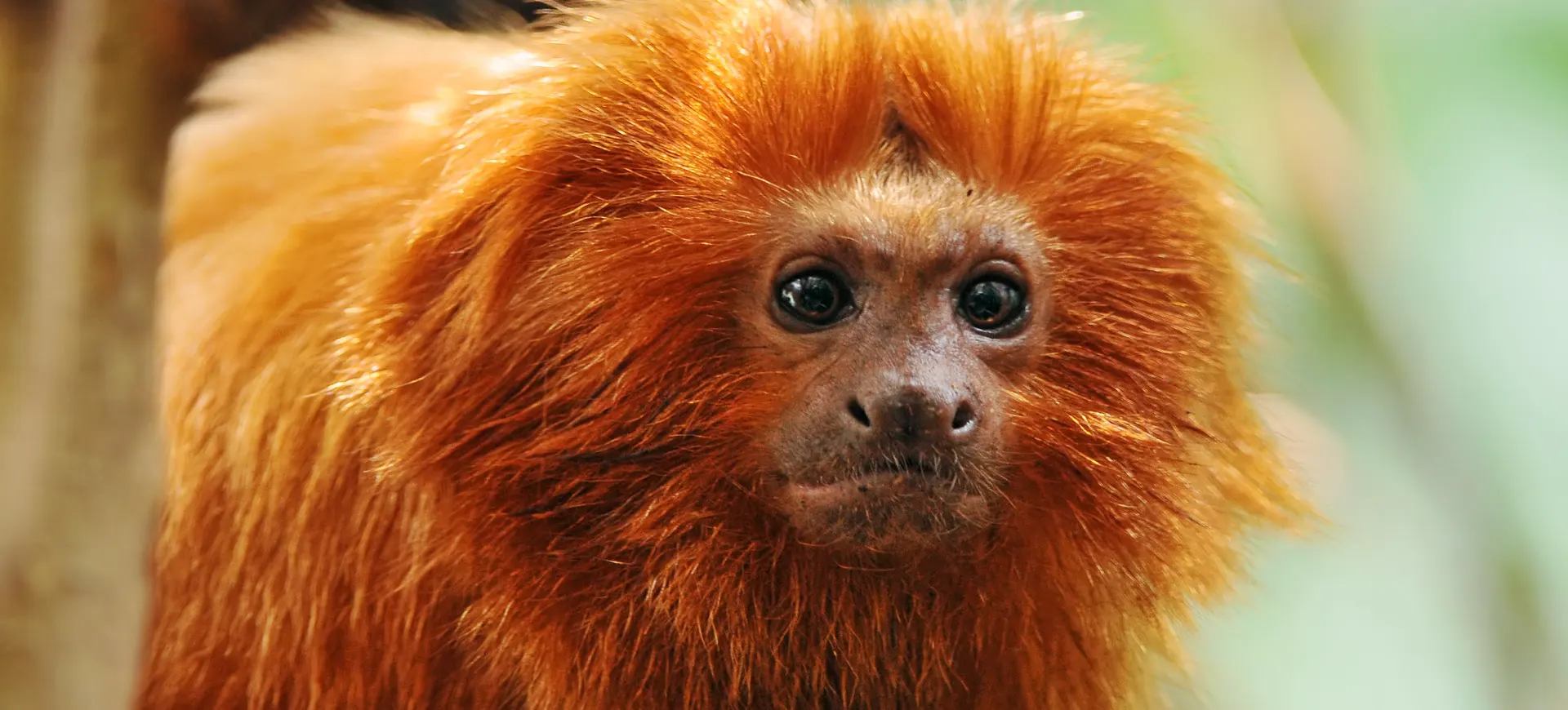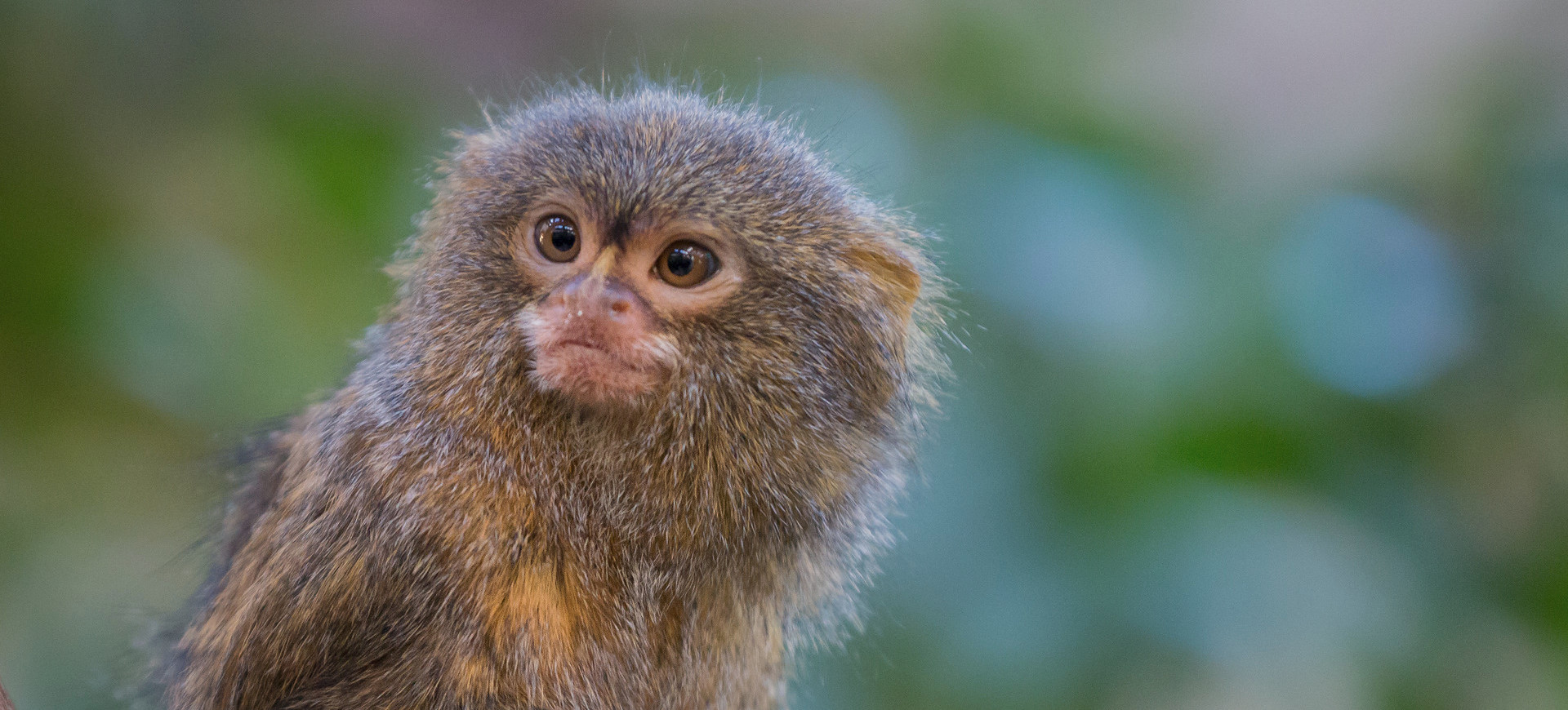Overview
The Eastern Pygmy Marmoset (Cebuella niveiventris) is a small New World monkey native to the Amazon Basin in South America. This primate is one of the smallest in the world, weighing just over 100 grams and measuring around 5 to 6 inches in body length. Its diminutive size allows it to easily navigate the dense foliage of its habitat.
Its grayish-brown fur characterizes the species, providing excellent camouflage against its forested environment. It has a distinctive facial mask, with white fur surrounding its eyes and mouth, contrasting with its darker fur. The Eastern Pygmy Marmoset has specialized lower incisors adapted for gnawing holes in tree bark to access sap, which forms a significant part of its diet.
Despite its small size, the Eastern Pygmy Marmoset is a highly social animal. It lives in family groups and engages in cooperative behaviors such as grooming and food sharing. The species communicate using a variety of vocalizations, including chirps and whistles, which serve different purposes like alerting group members to danger or signaling the discovery of a food source.
Taxonomy
Kingdom
Phylum
Class
Order
Family
Genus
Species
Type
Physical Description:
The Eastern Pygmy Marmoset has a small, compact body covered in grayish-brown fur. Its fur is camouflaged, blending seamlessly with its natural habitat’s tree bark and leaves. The species has a distinctive facial mask, with white fur around its eyes and mouth, contrasting sharply with its darker fur.
The animal has specialized lower incisors that are elongated and sharp, adapted for gnawing through tree bark. These incisors allow the marmoset to access tree sap, a significant part of its diet. Despite its small size, it is agile and can leap considerable distances between branches, aided by its long, bushy tail that provides balance.

Lifespan: Wild: ~8 years || Captivity: ~15 years

Weight: Male: 3.5–4.2 oz (99–119 g) || Female: 3.4–4.1 oz (96–116 g)

Length: Male: 4.5–5.1 in (11.4–13 cm) || Female: 4.4–5.0 in (11.2–12.7 cm)

Top Speed: 24 mph (38.6 km/h)
Characteristic:
Native Habitat:
The Eastern Pygmy Marmoset is native to the Amazon Basin and inhabits dense tropical forests. It prefers areas with abundant trees that produce the sap it feeds on. The species is highly arboreal, spending most of its time in the trees, where it navigates the complex network of branches and vines with agility.
The species is well-adapted to its environment, using its small size and agility to evade predators and find food. It is most active during the day but may also be during twilight hours. The Eastern Pygmy Marmoset’s habitat is increasingly threatened by deforestation and habitat fragmentation, which poses challenges for its survival.
Climate Zones:
Biomes:
WWF Biomes:
Biogeographical Realms:
Continents:
Diet:
Diet & Feeding Habits:
The Eastern Pygmy Marmoset primarily feeds on tree sap, which it accesses by gnawing holes in tree bark with specialized lower incisors. It also consumes fruits, insects, and small vertebrates when available. The species is known for its ability to hang upside down from branches while feeding, using its strong hind limbs for support.
Foraging is a group activity, and the marmosets often spread out to cover a larger area. They communicate using vocalizations to alert each other about the presence of food or danger. The diet is supplemented by fruits and insects, especially during the dry season when tree sap is less abundant.
Mating Behavior:
Mating Description:
The Eastern Pygmy Marmoset has a polygynous mating system, where a dominant male mates with multiple females in the group. During the mating season, the dominant male engages in elaborate displays, including vocalizations and physical postures, to attract females. The females, in turn, may mate with multiple males but will primarily choose the dominant male for copulation.
After a successful mating, the gestation period lasts about 4.5 months, after which the female gives birth to twins. All group members participate in caring for the young, including grooming, feeding, and carrying them on their backs. This cooperative behavior is crucial for the young’s survival and the group’s overall stability.
Reproduction Season:
Birth Type:
Pregnancy Duration:
Female Name:
Male Name:
Baby Name:
Social Structure Description:
The Eastern Pygmy Marmoset lives in small family groups consisting of a dominant male, a breeding female, and their offspring. The social structure is complex, with a clear hierarchy where the dominant male has exclusive mating rights with the females. Group members communicate through various vocalizations, which serve different purposes, such as alerting to danger or coordinating while foraging.
The group has a strong sense of cooperation, especially in caring for the young. All group members participate in grooming, feeding, and protecting the infants. This cooperative behavior is crucial for the young’s survival and the group’s overall stability.
Groups:
Conservation Status:
Population Trend:
Population:
Population:
Due to the lack of comprehensive studies, the current population status of the Eastern Pygmy Marmoset in the wild is not well-documented. What is known is that the species faces threats from habitat loss and fragmentation, primarily due to logging and agricultural expansion. These threats are exacerbated by the illegal pet trade, which targets this species due to its small size and distinctive appearance.
Despite these challenges, the Eastern Pygmy Marmoset remains in various parts of its native range, including protected areas. However, more research is needed to ascertain this species’ exact numbers and distribution. Conservation efforts primarily focus on habitat preservation and combating the illegal pet trade.
Population Threats:
The primary threats to the Eastern Pygmy Marmoset include habitat loss and fragmentation, mainly due to logging and agricultural expansion. The species is also targeted for the illegal pet trade, putting additional pressure on its declining numbers. The loss of food sources due to deforestation is another significant concern, as it impacts the species’ ability to find sufficient nourishment.
Climate change poses an emerging threat, as it could alter the species’ habitat and food availability. Rising temperatures and changing precipitation patterns could affect the distribution of trees that produce the sap the Eastern Pygmy Marmoset relies on for sustenance. These combined threats make the species increasingly vulnerable, necessitating urgent conservation measures.
Conservation Efforts:
Conservation efforts for the Eastern Pygmy Marmoset are primarily focused on habitat preservation and combating the illegal pet trade. Various non-governmental organizations and governmental bodies are working to protect the Amazon rainforest, which is the primary habitat for this species. Sustainable forestry practices are being promoted to minimize the impact of logging on the species’ food sources.
Educational programs are also in place to raise awareness about the ecological importance of the Eastern Pygmy Marmoset and the threats it faces. These programs aim to discourage the illegal pet trade and promote responsible tourism in regions where the species is found. While the species’ conservation status is currently listed as Data Deficient, ongoing monitoring is essential for long-term survival.
Additional Resources:
Fun Facts
- The Eastern Pygmy Marmoset is one of the world’s smallest primates.
- Despite its small size, it can leap up to 16 feet between branches.
- It has specialized lower incisors for gnawing through tree bark to access sap.
- The species communicate using a variety of vocalizations, including whistles and chirps.
- Both males and females participate in caring for the young.
- The Eastern Pygmy Marmoset is polygynous, with one dominant male mating with multiple females.
- It can rotate its head 180 degrees, allowing for better visibility in its dense forest habitat.
- The species is not migratory and tends to stay within its established territory.
- It plays a vital role in seed dispersal in its ecosystem.
- The Eastern Pygmy Marmoset can live up to 15 years in captivity, longer than its average lifespan in the wild.





